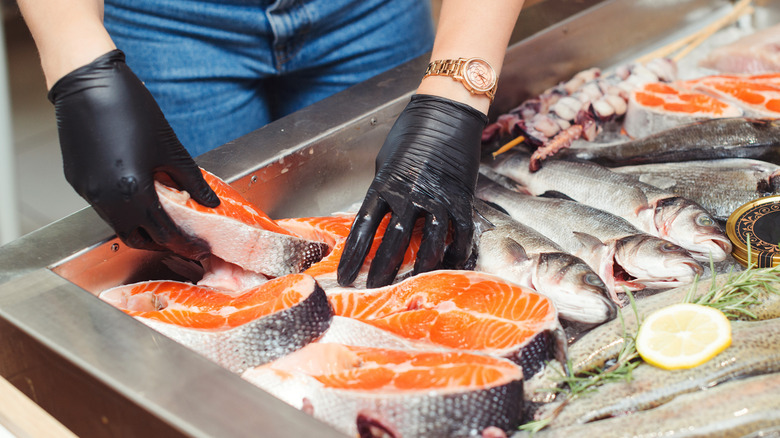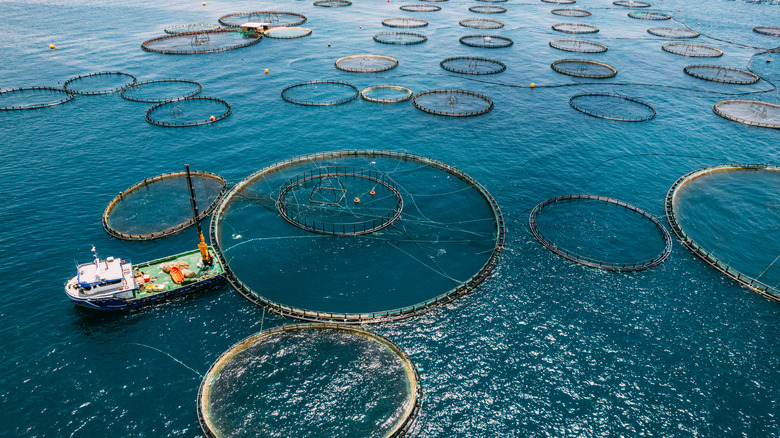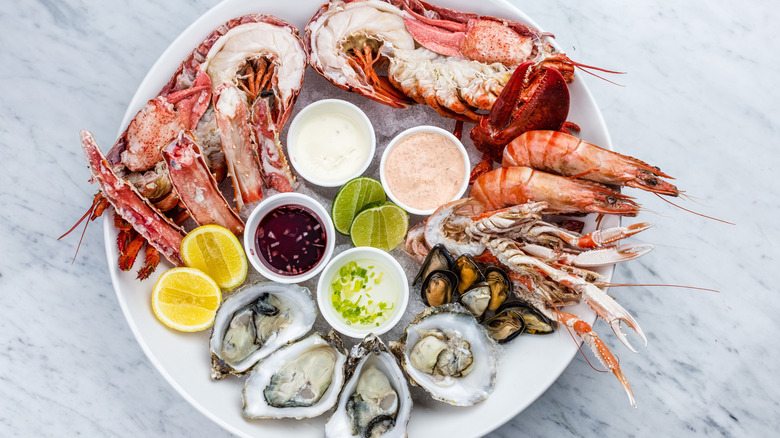Organic Seafood Is Pretty Much Just A Myth
If you're at the supermarket searching for organic seafood, chances are you're trying to make a responsible decision for the planet. Unfortunately, when it comes to seafood, what can or cannot be defined as organic is not as clear-cut as it is for other things that we consume, like bananas, beef, or coffee beans.
While farmers, ranchers, and other food producers can meticulously monitor just about everything for food that is grown, raised, and made on land, it's not as easy to control the conditions out at sea. Wild fish and fish raised in ocean-based farms live in environments that change with the flow of water, which means the cleanliness of their habit and the contents of their diets can't always be managed to meet rigorous organic regulations. As a result, the United States Department of Agriculture has not created organic certification standards for aquaculture, including both wild-caught and farm-raised fish. If you see fish labeled as organic in a store, you will likely note it isn't "USDA Organic," which means it most likely isn't truly organic (per USDA).
What defines organic and why seafood is hard to label
The recent annual sale of organic foods in the United States has surpassed a total value of $60 billion USD (via OTA), and it's now possible to eat nearly everything organic — from organic eggs at breakfast to organic beer in the evening — yet seafood remains one of the rare foods that still does not have a standardized system for organic production practices. This is because organic certification applies to both how the environment affects the food, as well as how the food affects the environment.
The USDA defines organic standards as "cultural, biological and mechanical practices that foster cycling of resources, promote ecological balance and conserve biodiversity" and adds that "synthetic fertilizers, sewage sludge, irradiation, and genetic engineering may not be used." Those who work in aquaculture can't guarantee a complete absence of toxic chemicals in the ocean or in the foods that a fish eats. They also often cannot maintain the natural migration and diversity of fish to maintain a balanced ecosystem. In a nutshell, because wild seafood is, well, wild, there's no way to regulate it to meet organic guidelines.
Tips for sourcing sustainable seafood
For those looking to sustainably source seafood, there are ways to do so without an organic label. Check out a simple guide to sustainable seafood and apps for safe, sustainable eating, like Fishmonger, which takes into account factors like seasonality. If you're interested in buying organic food because of the impact on the environment, try to buy your seafood from your local watershed. Oysters and other shellfish like mussels are a great option because they filter the water that surrounds them. If you prefer organic food because you want to avoid things like heavy metals in your food, shellfish are also ideal because they tend to have lower concentrations of mercury and other contaminants than fish – though choices like salmon and sardines are also good options.
Once you've figured out where to buy the best seafood, you can enjoy it in a variety of sustainable seafood recipes and opt to look for organic labels on the ingredients that you pair with it, such as lemons, rice, or butter.



